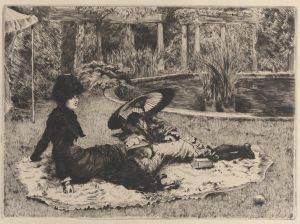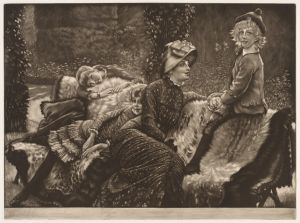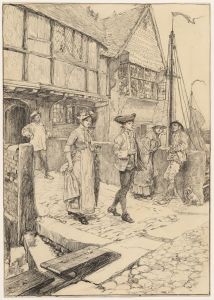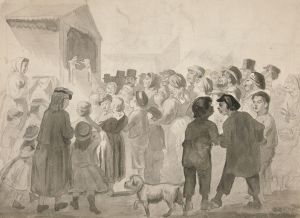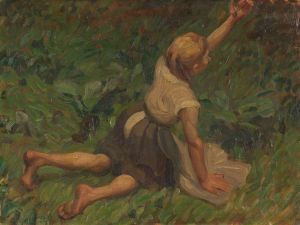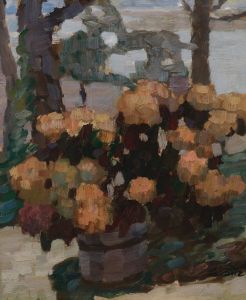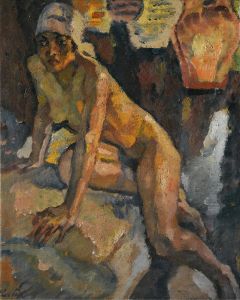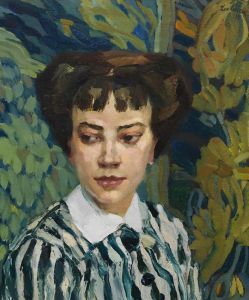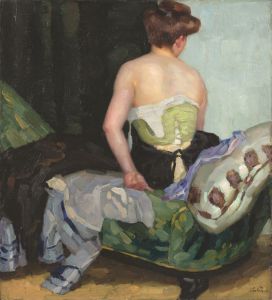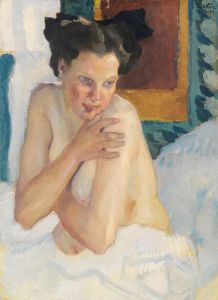
The picnic
A hand-painted replica of Leo Putz’s masterpiece The picnic, meticulously crafted by professional artists to capture the true essence of the original. Each piece is created with museum-quality canvas and rare mineral pigments, carefully painted by experienced artists with delicate brushstrokes and rich, layered colors to perfectly recreate the texture of the original artwork. Unlike machine-printed reproductions, this hand-painted version brings the painting to life, infused with the artist’s emotions and skill in every stroke. Whether for personal collection or home decoration, it instantly elevates the artistic atmosphere of any space.
Leo Putz was an Austrian painter known for his contributions to Impressionism and Art Nouveau. Born on June 18, 1869, in Merano, which was then part of the Austro-Hungarian Empire, Putz developed a distinctive style characterized by vibrant colors and dynamic compositions. His work often depicted scenes of leisure and nature, capturing the essence of early 20th-century European life.
"The Picnic" is one of Putz's notable works, exemplifying his skill in portraying outdoor scenes with a sense of immediacy and liveliness. While specific details about the painting's creation, such as the exact year it was painted, are not widely documented, it is consistent with Putz's thematic focus during the early 1900s. This period was marked by his exploration of light and color, influenced by the Impressionist movement.
In "The Picnic," Putz captures a group of people enjoying a leisurely day in a natural setting. The composition is likely to feature figures engaged in casual activities, surrounded by lush greenery and dappled sunlight. Putz's use of color and brushwork would typically convey a sense of movement and spontaneity, inviting viewers to experience the scene as if they were part of it.
Putz's technique often involved loose, expressive brushstrokes that emphasized the play of light and shadow. This approach allowed him to create a vibrant atmosphere, highlighting the joy and relaxation associated with outdoor gatherings. The painting's palette would likely include a range of greens, blues, and earth tones, reflecting the natural environment and the clothing of the figures.
Throughout his career, Putz was associated with several art movements and groups, including the Munich Secession, which he joined in 1897. This association provided him with a platform to exhibit his work and connect with other artists who shared his interest in modernizing art. Putz's contributions to the Secessionist movement helped to shape the direction of early 20th-century art in Germany and Austria.
In addition to his involvement with the Munich Secession, Putz was also a member of the Berlin Secession and the Vienna Secession, further establishing his reputation as a prominent figure in the European art scene. His work was exhibited widely, earning him recognition and acclaim during his lifetime.
Putz's artistic legacy is characterized by his ability to capture the fleeting moments of everyday life with a sense of beauty and immediacy. His paintings, including "The Picnic," continue to be appreciated for their vibrant depiction of leisure and nature, reflecting the cultural and artistic trends of his time.
While specific information about "The Picnic" may be limited, the painting remains an example of Leo Putz's mastery of color, light, and composition. His work continues to be studied and admired for its contribution to the development of modern art in the early 20th century.





